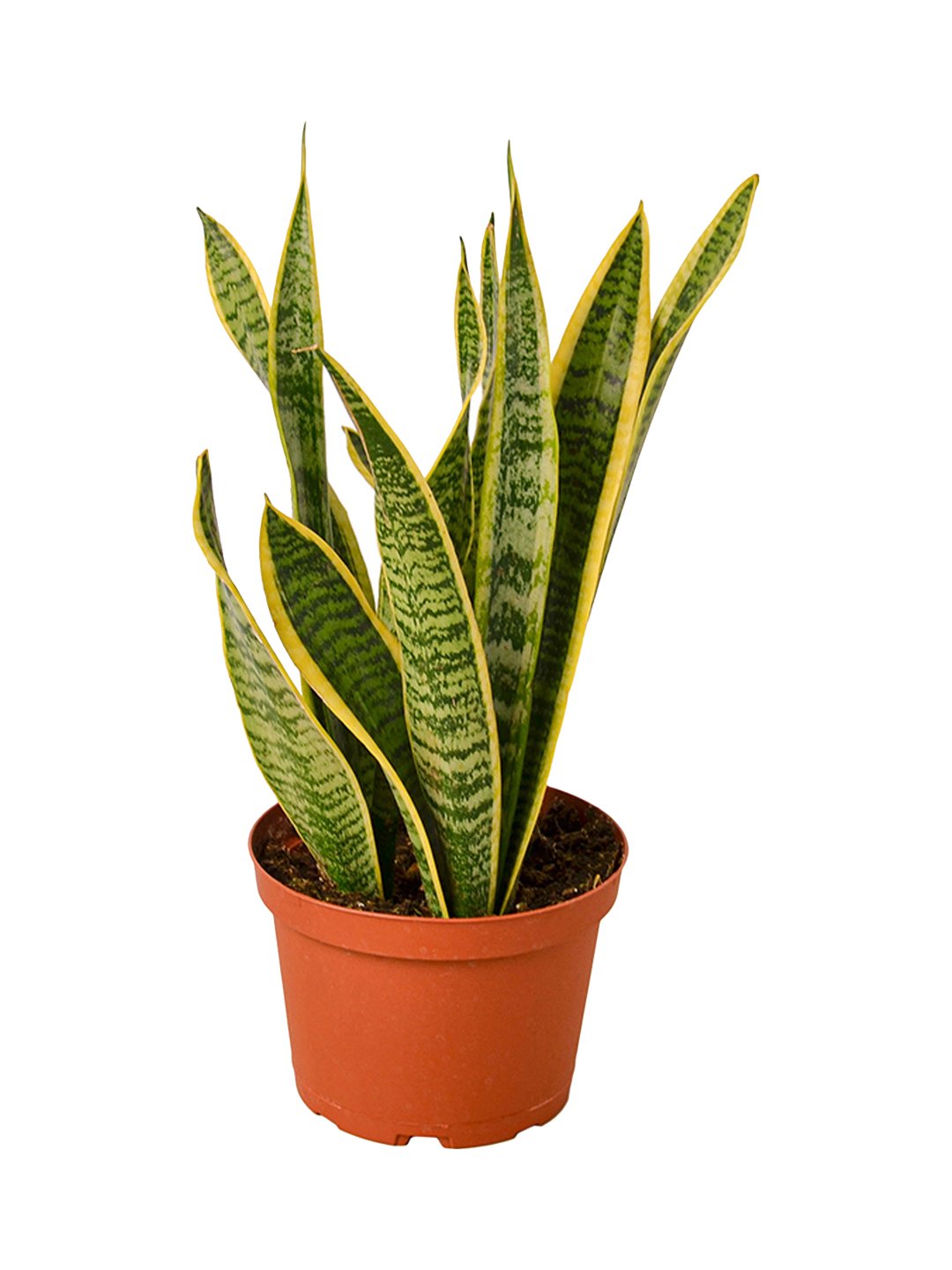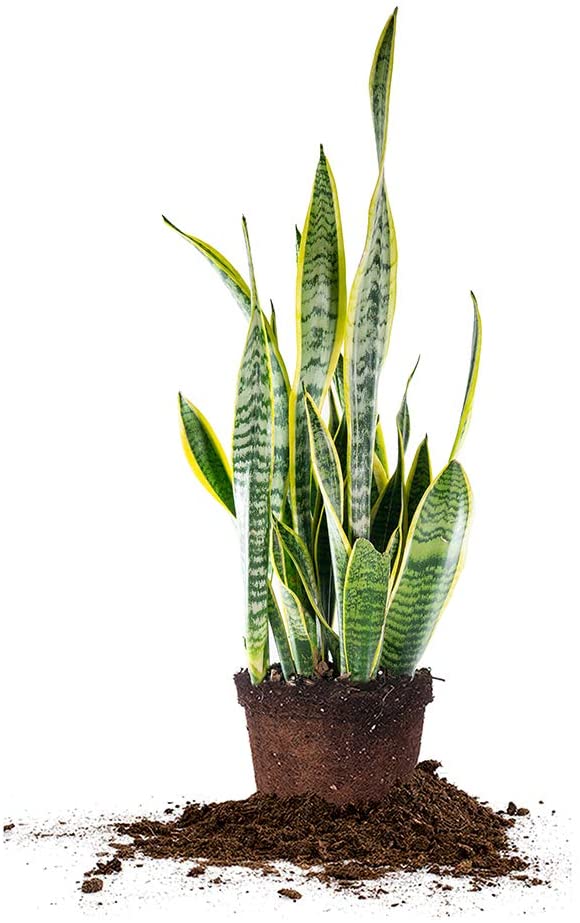This carelessness is why I’m head over heels for my hardy snake plant. While some plants are fairly high-maintenance and borderline dramatic (cough, cough: the fiddle-leaf fig) sansevierias, known also as snake plants or mother-in-law's tongues, are the quite the opposite. In fact, these trusty greens are so resilient they can go up to two weeks without water. Yes, you read that right—two weeks without water.
Erin Marino, director of brand marketing and plant expert at The Sill, explained that these pretty plants are tough and chill for two main reasons. First, they’re succulents, meaning they’ve evolved to adapt to hot, arid climates where water isn’t always available. “Its drought-tolerance makes it an incredibly resilient plant—indoors and outdoors,” she says. “Depending on how much light your snake plant is exposed to and what time of year it is, it can go weeks without watering.”
Second, snake plants can tolerate low light, which is unusual for most common succulents. Their thick, dense leaves prefer medium to bright light, but if you’re in an environment where natural light is hard to come by, Marino says your snake plant will tough it out just fine. Like other succulents, the snake plant has a modified form of photosynthesis, giving it a camel-like ability to preserve water, due to the timing of when it opens its pores. “Since photosynthesis only happens with daylight, the plant stores carbon dioxide acquired at night for use during the day,” Marino says. “Then it releases oxygen—one of the end products of photosynthesis—at night when the pores open.” Meaning: It's kind of a cinch to tend to.
{{post.sponsorText}}
Okay, so even though these hardy houseplants can handle just about any environment, Marino does have some general care tips. The first one goes back to lighting: Yes, your snake plant will survive low-light condition, but if you want it to really thrive, Marino says to look for a place in your home with bright, indirect light. Be careful, because too much sun will burn the leaves. Instead, look for a sill or plant a window box somewhere where the sun doesn't directly stream onto the plant.
As for water, it depends on the amount of light they’re exposed to, as well as the time of year. The lower the light, the less frequent watering. “Expect to water more often in brighter light, or summer,” Marino advises. “And always allow the soil to dry out completely between waterings.” Pro tip: if you’re nervous to overwater your snake plant, wait for the leaves to slightly wrinkle. That’s a sign of thirst. Other than that, pick a pot with some good drainage to avoid water logging the roots.
If you're inspired to continue on with your indoor garden from there, the ponytail palm, has a thick trunk that can retain water for weeks at a time and the ZZ plant, has "large potato-like rhizomes under the surface of the ZZ Plant's soil or potting mix," says Marino. "These store water to help the plant survive drought in its native habitat."
Catch more tips on hard-to-kill plants here:
Loading More Posts...

